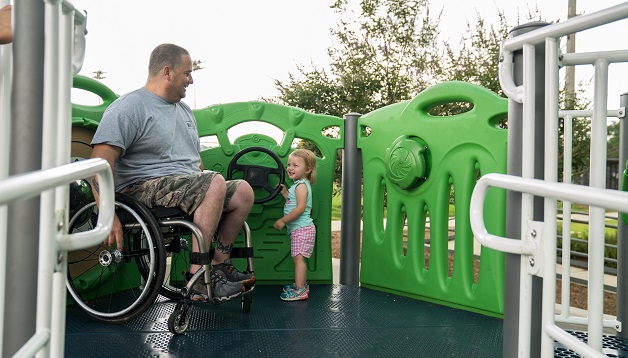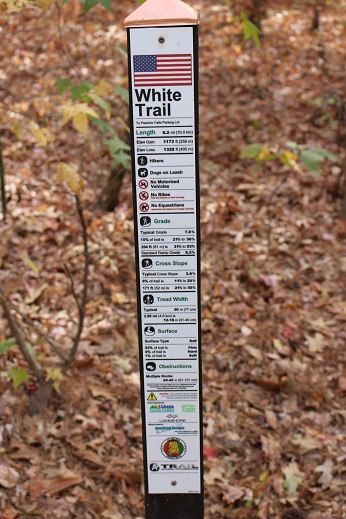By Allison Tubbs, Project Coordinator, NCHPAD
NCHPAD is happy to be a supporter of this year’s Park and Recreation Month led by the National Recreation and Park Association (NRPA). This July, NRPA wants everyone to discover the power of play and adventure! For people with disabilities, discovering the power of play starts with access, opportunity, and inclusion. Health inequity and disparities are caused by lack of access to healthy opportunities. Through organized efforts to create opportunities for people with disabilities, we can address health disparities that lead to physical inactivity.
Physical inactivity is high among all children and those with disabilities experience 4.5 times greater levels of inactivity. Adults with disabilities are more likely to live a sedentary lifestyle and 3 times more likely to have heart disease, stroke, diabetes, or cancer than adults without a disability. Encouraging active play is a great way to get children and adults more physically active! Given equal access to outdoor spaces, all people can play and be physically active regardless of age, income, or ability.

The National Council on Disability concluded that environmental factors are considered the most important access barrier. In terms of outdoor facilities and trail usage, the lack of knowledge about actual on-site conditions was the greatest barrier among people with disabilities. Other elements that affect physical accessibility include parking, routes to and through the facility, entrances, bathrooms, seating, counter and table heights, and more. While not every outdoor area can be fully accessible—because no one wants to pave the wilderness—more can be done to provide access through opportunity and choice.

One example to create access and opportunity is through the use of a High Efficiency Trail Assessment Process. This process includes outdoor trail assessment and mapping along with training for park staff. Assessment results are used to determine Trail Access Information (TAI) – such as grade, cross slope, width of paths, surface, and any obstructions – in order to help users make informed decisions and plan accordingly before visiting a park. The outcome, centered around universal design, is focused on designing to meet the needs of the majority of the population regardless of age or abilities. While accessible design is focused on the needs of people with disability, universal design considers the full spectrum of human experiences including people with disability, older adults, children, and trail goers with limited experience. The TAI looks similar to a nutrition facts label on food packaging and is displayed at trail heads in a strip that conveys the minimum information needed to make an informed decision. The availability of this type of information provides several benefits to the user, such as providing consistent information, increasing independence, safety, and enjoyment, encouraging informed decision making, and having the knowledge of actual outdoor area conditions. Learn more about this assessment process and see a pilot project in action here.
While celebrating the great outdoors this month, think about how you can create more access and opportunity through choice for people with disability. Some common approaches for including people with disability in health promotion programs include the following:
- Peer support
- Adaptive equipment
- Materials in alternative formats and inclusive communication
- Inclusion aides
- Staff training in disability awareness
- Alternatives and modifications to activities
- Developing partnerships
- Utilizing existing resources
 When public health strategies are made inclusive, they can have a profound influence on improving health behaviors. The Inclusive Health Bill of Rights includes ten basic rights that should be afforded to all people in relation to inclusive health. Make a Commitment to Inclusion this July and join local and national organizations as a partner in the Partnership for Inclusive Health!
When public health strategies are made inclusive, they can have a profound influence on improving health behaviors. The Inclusive Health Bill of Rights includes ten basic rights that should be afforded to all people in relation to inclusive health. Make a Commitment to Inclusion this July and join local and national organizations as a partner in the Partnership for Inclusive Health!
To learn more about Park and Recreation Month and how you can get involved go to: http://www.nrpa.org/july/.
Spread the word! Share this post with your network using this sample tweet: Discovering the power of play starts w/access, opportunity, & inclusion. More from @NCHPAD on BAYW blog: http://bit.ly/2sQo3Vy #PlayonJuly